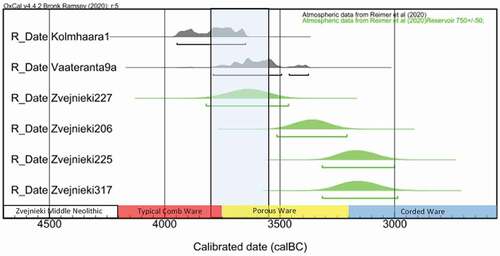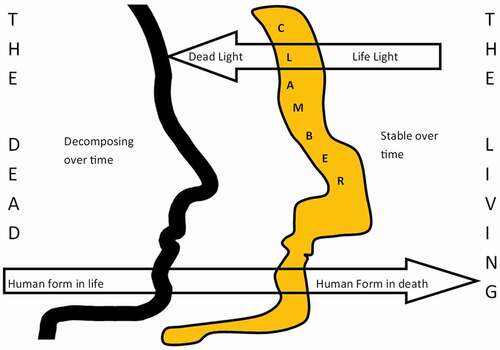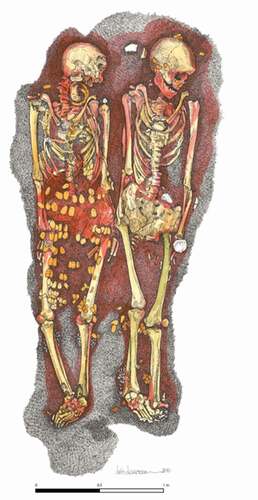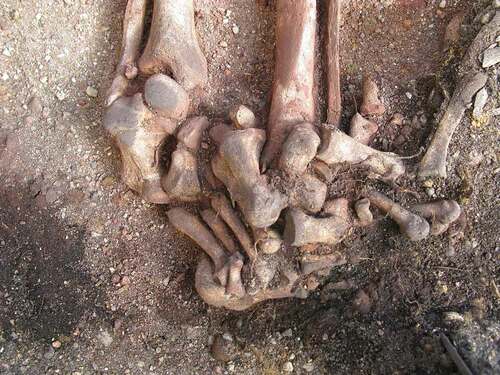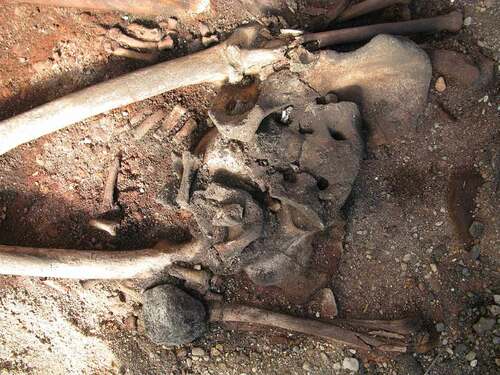Figures & data
Table 1. Instances of burials featuring “death masks” in the Eastern Baltic, as identified by previous authors. C = cemetery site; CaS = Cemetery at settlement site; GaS = Grave at settlement site
Table 2. C14 dates from burials featuring “death masks”. The Zvejnieki dates have been corrected for the carbon reservoir effect, following Meadows et al. Citation2018
Figure 1. Probability distribution plot of radiocarbon dates from 4th millennium cal BC clay masked burials. Shaded area shows the modelled extent of the Typical Comb Ware period in Finland, after Pesonen & Oinonen (Citation2019)
